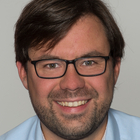The Current Column
Trapped in poverty by lack of health insurance
Modicare could help India’s poor population
Strupat, ChristophThe Current Column (2019)
Bonn: German Development Institute / Deutsches Institut für Entwicklungspolitik (DIE), (The Current Column of 11 March 2019)
Bonn, 11 March 2019. India began to establish the world’s largest health insurance scheme late last year, with the government planning to insure up to 500 million households. The reform is popularly known as “Modicare”, in reference to the Indian Prime Minister. If the new programme is successful, it will be a major step forward in providing social protection to many poor families and could serve as a model to other countries. German development cooperation assists India with the implementation process, and a research consortium involving the German Development Institute / Deutsches Institut für Entwicklungspolitik (DIE) will provide an impact assessment and accompanying research for the programme over the next few years. India has long played a key role in including poor households in the health care system. The country with one of the highest levels of absolute poverty in the world (on the equivalent of less than USD 1.9 per day) already introduced a taxpayer-funded health insurance scheme (RSBY) specifically for poor households in 2008. 41 million poor households are currently insured under this scheme without having to pay contributions. The new programme scales up the existing scheme and removed barriers to access such as formal application processes and substantially expanded the health care package. In addition, the insurance sum increased 17-fold to the equivalent of about EUR 6,000 per household, and a further 60 million poor households were included in the insurance. Poor households are particularly vulnerable to health risks. Without health insurance, they are forced to spend much of their income on hospital bills in the event of serious illness. They also often have no choice but to sell productive assets such as livestock, take on loans at exorbitant interest rates and permit child labour. As a result, they either remain as poor as before or become even more impoverished. State and private efforts at national and local level are therefore key to ensuring that poor population groups are included in health insurance schemes. In order to integrate poor households into health insurance schemes, countries such as India should take into account three factors. First, poor households have to be identified and an appropriate health care package that can be financed by the state needs to be defined for them. Second, success depends on effective public awareness campaigns and on having the right legal framework in place. Both of these elements are needed in order to ensure that the poorest groups are aware of their rights and the benefits of health insurance. Third, ensuring that the poorest individuals have insurance cover without having to pay contributions is not enough in and of itself. Poor hospital facilities, doctor shortages, long waiting times and high informal supplementary payments can frustrate efforts to improve access to public health services. Consequently, the quality of health care provision is just as important as having health insurance cover in place. German development cooperation should continue to promote the expansion of universal health insurance programmes, taking account in the process of the aforementioned factors. Good health care is a key component in the achievement of the UN Sustainable Development Goals (SDGs) and pivotal for economic development and poverty reduction. It remains to be seen whether the Indian Government will succeed in implementing its ambitious plans and establishing a health insurance scheme that takes account of the aforementioned factors. Critics have already bemoaned the underfunding of the insurance scheme, which has a budget of just under USD 300 million (0.01 per cent of GDP) for the first year. Developments in the Indian health sector should therefore be closely monitored in the next few years. India’s new health insurance scheme offers a major opportunity for protecting millions of poor households against high health care costs and for determining its impacts on poverty.
The Deutsche Gesellschaft für Internationale Zusammenarbeit (GIZ) GmbH, on behalf of BMZ, and in cooperation with the Indian Ministry of Health and Family Welfare have commissioned a research consortium to provide research support for the implementation of the health insurance reform in the coming years.

